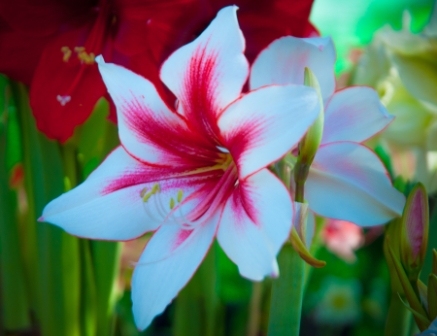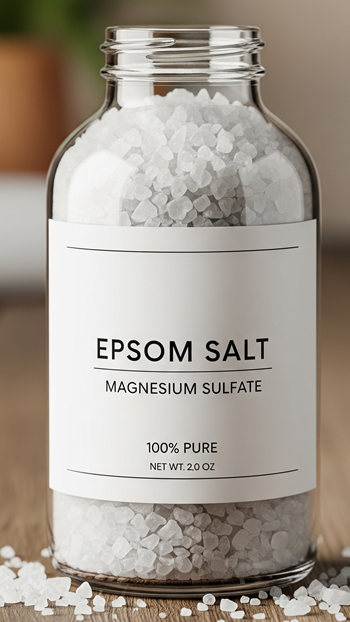
Magnesium is a major building-block in the formation of chlorophyll and plays a role in the functioning of plant enzymes to produce carbohydrates, sugars and fats. We can understand the importance of regularly providing magnesium as part of our feeding regime. Unfortunately, not all fertilizers provide magnesium, so we may find a need to add it via some sort of supplementation. Fortunately, that is easy to do using inexpensive Epsom Salt purchased from your neighborhood drug store.
But of course, we need to consider just how much to use, and how often to do so. First let’s look at the chemistry. Epsom Salt is a magnesium sulfate mineral – giving a double benefit, as sulfur is a plant nutrient as well. (Its name incidentally, comes from a bitter, saline spring at Epsom, Surrey, England, where it was found to be useful as a bath salt and laxative back in Shakespearean times.) The form we can purchase at the drug store is the septahydrate, MgSO4•7H2O. By mass, that means that Epsom Salt is approximately 10% magnesium and 13% sulfur, with the balance being hydrogen and oxygen.

Many will acknowledge that the Greencare Orchid Special formula for RO water – the original, so-called “MSU” fertilizer – is a very good and complete fertilizer formula. It contains 2% Mg in its dry form. In order to achieve the commonly-recommended fertilizer solution concentration of 125 ppm N, the label tells us to use 3.55g of fertilizer to make up a gallon of solution. That means, therefore, that the gallon contains 3.55g x 2% = 0.071g Mg.
If our fertilizer contains no magnesium, and we want to add that same 0.071gram per gallon using Epsom Salt, we would need 0.071g ÷ 0.10 = 0.71g of Epsom Salt per gallon of solution.
Most people do not have a lab scale available to measure it; let’s convert that to a practical volume measurement. The bulk density of granular drug store Epsom Salt is about 1.05g/cc. That means that we would need 0.71g ÷ 1.05g/cc = 0.68cc per gallon. As there are approximately 5 cc (or ml) in a teaspoon, that’s just a bit more than 1/8 teaspoon (0.136 versus 0.125 – 9% more).
Using the “MSU” fertilizer approach of continuous feeding, we should therefore add about 1/8 teaspoon of Epsom Salt to every gallon of fertilizer we apply. Some growers however, prefer to do periodic supplementation – typically monthly – but to in order to keep a similar, overall addition level, we need to consider our feeding frequency. If you typically feed three out of four waterings, and water twice a week, then over the course of a month you feed about six times. To achieve the same amount of magnesium as if you had supplemented your fertilizer at every feeding, you would need 0.136 x 6 = 0.816 teaspoons – or to make life a bit easier – somewhere between 3/4- and 1 teaspoon per gallon, added to your fertilizer solution once a month.
Others do quarterly additions, meaning they should be approximately a tablespoon per gallon, but at that concentration, the amount of dissolved solids is getting fairly high. So rather than adding it to the fertilizer and raising the TDS even more, it is probably better to add it to plain water only for application.
Ray Barkalow has been growing orchids for over 45 years, and owns First Rays, which offers horticultural products to the hobby grower. He may be contacted at raybark@firstrays.com and you can visit his website at FirstRays.com.




Comment here